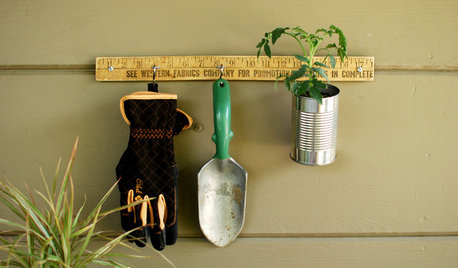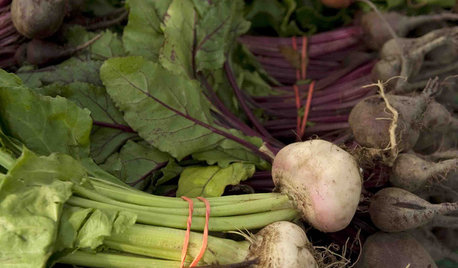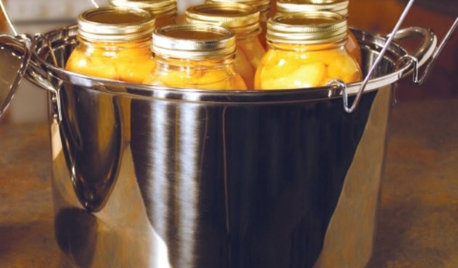Canned Tomato Juice Separtaion
chilehead1
16 years ago
Related Stories

EDIBLE GARDENSSummer Crops: How to Grow Tomatoes
Plant tomato seedlings in spring for one of the best tastes of summer, fresh from your backyard
Full Story
LIFEKitchen Traditions: Tomato Season Meets a Family Legacy
Somewhere a Sicilian great-great-grandmother is smiling at a bowl of American-made sauce
Full Story
EDIBLE GARDENS6 Summer Edibles That Can Really Take the Heat
When garden temperatures soar, these herbs and vegetables rise to the challenge
Full Story
DIY PROJECTS17 Ways to Decorate With Everyday Things
Characters on the new Netflix series 'Orange Is the New Black' make the most of what they have. Here's how you can too
Full Story
LIFESlow Living 101: Tips for Turning Off the Chaos
It may feel as though you're too busy to slow down and enjoy life. But even little changes can have a big effect
Full Story
HOUSEKEEPINGHow to Clean Marble Countertops and Tile
Acidic solutions can damage your marble surfaces. Here’s how to keep marble looking clean and amazing
Full Story
HOUSEPLANTS8 Essentials for Healthy Indoor Plants
Houseplants add so much to our homes — and can thrive when grown in the right conditions. Keep these tips in mind
Full Story
FARM YOUR YARDCool-Season Vegetables: How to Grow Beets
Give canned versions of this fall and spring garden favorite the heave-ho and discover its true flavor and colors
Full Story
KITCHEN COUNTERTOPSKitchen Counters: Tile, the Choice for Affordable Durability
DIYers and budget-minded remodelers often look to this countertop material, which can last for decades with the right maintenance
Full Story
PRODUCT PICKSGuest Picks: Canning, Preserving, Steaming, Dehydrating
20 products to help make fall produce last through the season and beyond
Full Story

readinglady
ksrogers
Related Professionals
Westwood Landscape Contractors · Deerfield Beach Landscape Contractors · Del Aire Landscape Contractors · Indianapolis Landscape Contractors · Laguna Hills Landscape Contractors · Methuen Landscape Contractors · North Plainfield Landscape Contractors · Northbridge Landscape Contractors · Oviedo Landscape Contractors · San Antonio Landscape Contractors · Twin Falls Landscape Contractors · South Pasadena Roofing & Gutters · Columbus Roofing & Gutters · Fitchburg Roofing & Gutters · Mission Viejo Driveway Installation & Maintenancechilehead1Original Author
ksrogers
readinglady
shirleywny5
david52 Zone 6
ksrogers
readinglady
kydaylilylady
oldroser
david52 Zone 6
chilehead1Original Author
ksrogers
cinsay
knifethrower_q_com
antoniosf